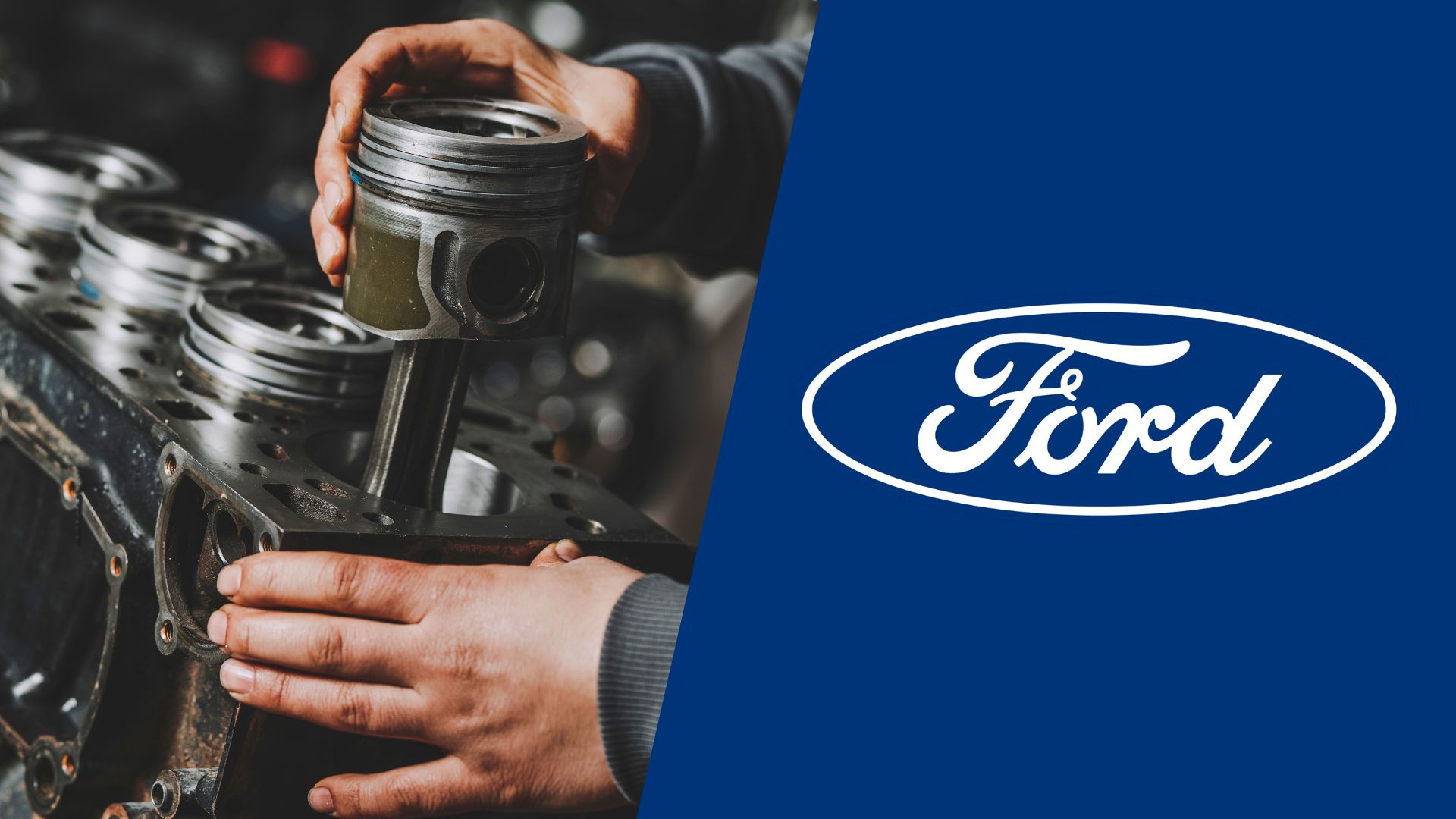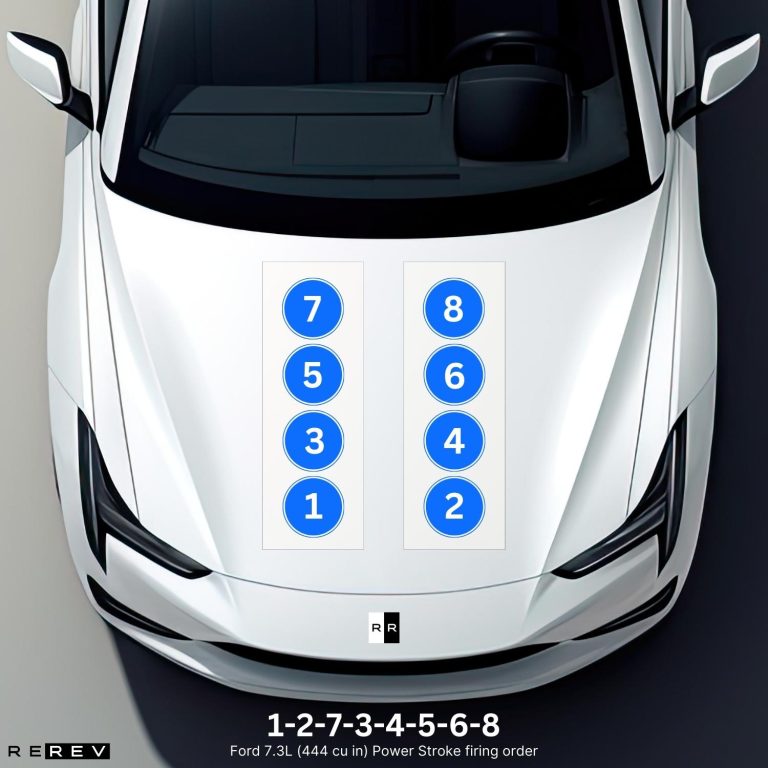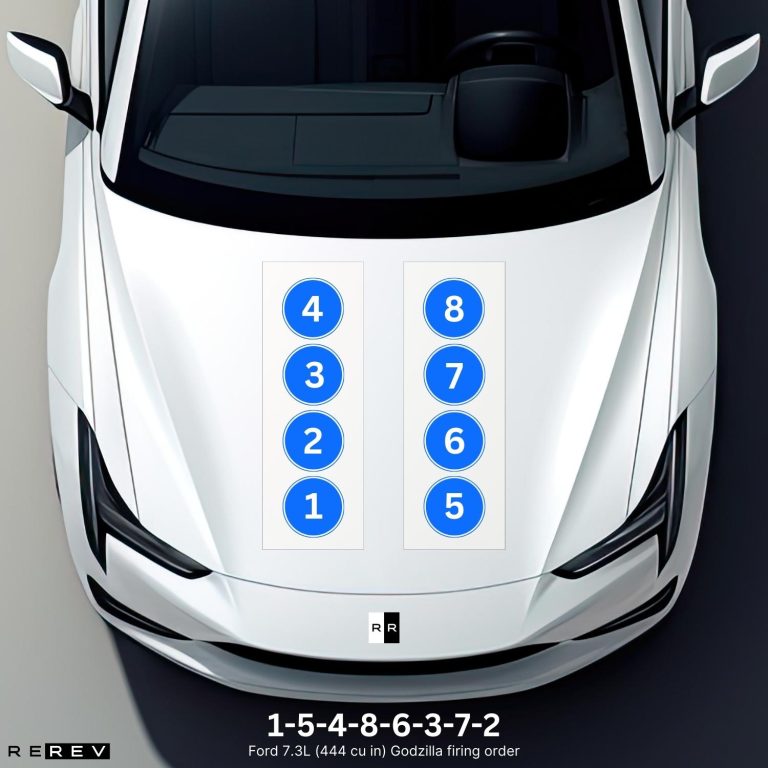Ford 7.3L (444 cu in) firing order — diagram & guide
Performance optimization through the Ford 7.3L engine firing sequence.

If you drive one of Ford’s heavy-duty trucks and utility vehicles, the 7.3-liter V8 seems like a pretty good option. However, the recent addition of the “Godzilla” engine along with the previous “Power Stroke” diesel caused quite a ruckus regarding the Ford 7.3L (444 cu in) firing order.
Some drivers even claim that the firing order for these two is the same, so what’s the score with these two engines? That’s what we are here to find out in this all-around guide on the firing sequence and cylinder marking of the 7.3-liter engine, so stand by for the details.
Ford 7.3L Power Stroke firing order
The good old Power Stroke engine was the first engine that Ford developed in this exact displacement capacity. So, to cut your worries short, the Ford 7.3L Power Stroke firing order is 1-2-7-3-4-5-6-8 and it’s completely different from the one of the “Godzilla” engine.
The Power Stroke engine in particular started production back in 1994 and it stuck all the way to the early 2010s.
So, if you have a modern 2020 or newer vehicle, chances are that the 7.3-liter engine under your hood is a Godzilla engine. Moreover, the Power Stroke is a diesel engine with a turbocharger, while the Godzilla is a naturally-aspirated petrol V8. so the differences are obvious.
The only potential mistake you could make is to misplace the two firing orders, so let’s see what’s the deal with the 7.3-liter petrol one.
Ford 7.3L Godzilla firing order
We’ll instantly clear out any doubts that you might have – the Ford 7.3L Godzilla Firing Order is 1-5-4-8-6-3-7-2, so the engine clearly fires differently from the Power Stroke diesel.
It first appeared in 2020, so it’s a fairly newer engine than the Power Stroke diesel, and it’s still currently in production so the differences are distinctive.
The Godzilla engine uses no turbo or superchargers, so it has a nice linear power distribution perfect for the Super Duty truck. In fact, this engine came right after the 6.2-liter V8 which was there before it and the two share some basic components of the engine block.
With this in mind, the firing order of the 7.3-liter Godzilla engine is the same as that of a 6.2-liter Boss V8 that these trucks had before it.
Ford 7.3L cylinder diagram
Besides the differences in the firing order of the 7.3-liter diesel and petrol engines, there’s one more thing that often confuses drivers – the cylinder placement.

Naturally, this also differs, so the Power Stroke diesel engine has an “even” and an “odd” cylinder bank. This means that cylinders 2, 4, 6, and 8 are placed on the driver’s side, while cylinders 1, 3, 5, and 7 are placed on the passenger’s side, looking from the radiator towards the engine’s rear end respectively.
Also, the odd cylinder bank is closer to the radiator than the even one, which adds up to the compression rate and power supply of this engine.

On the other hand, the 7.3-liter petrol engine has a signature cylinder arrangement to all of Ford’s V8 engines. This means that it comes with cylinders 1, 2, 3, and 4 on the passenger’s side and cylinders 5, 6, 7, and 8 on the driver’s side.
It’s important to note the cylinder placement differences between these two engines so you can follow the firing sequence to figure out which cylinder is misfiring.
Ford 7.3L vehicle applications
To sum things up, we’ve decided to list all the vehicles that use Ford’s 7.3-liter engines which may or may not help you figure out which engine your car uses. After all, the differences between the diesel and petrol variants and production years are clear, but some of the models between the two match, so let’s take a look:
Ford 7.3 Power Stroke diesel:
- Ford F-250
- Ford F-350
- Ford F-450
- Ford F Series Super Duty
Ford 7.3 Godzilla petrol:
- Ford F-250 Super Duty
- Ford F-350 Super Duty
- Ford F-450 Super Duty
- Ford F-650 Super Duty
- Ford F-750
- Ford E-Series 350 and 450
Our take
Ultimately, it’s not so difficult to figure out whether your vehicle runs on a petrol-powered or diesel-powered 7.3-liter engine. However, it is somewhat confusing to compare the details and firing orders, especially for these two engine types.
So, we tried to sum it up the best we possibly could in hopes of helping you out with the firing order and figuring out how to settle the engine issues for your car.